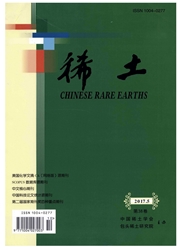

 中文摘要:
中文摘要:
郭城金矿位于胶莱盆地东北缘,矿体产出与荆山群地层,矿化类型以黄铁矿化和磁黄铁矿化为主,相比胶东其它金矿床成矿地质条件较为特殊。采用ICP-MS方法分别对郭城金矿矿石、牧牛山岩体和中基性脉岩中的稀土元素的组成进行了测定,探讨了成矿物质和成矿流体来源的问题。结果显示,矿石稀土元素配分曲线具有右倾型和平坦型两种型式。具平坦型配分曲线特征的矿石与花岗岩稀土元素配分曲线型式接近,二者具有较强的相关性;具右倾型配分曲线特征的矿石与脉岩的曲线型式类似,二者的相关性较好。晚期碳酸盐化的矿石具有极高的稀土含量。脉岩Eu异常不明显,矿石和花岗岩均具明显的Eu负异常。表明了成矿物质来源于牧牛山岩体和地壳深部,成矿流体来源于深部岩浆演化,矿床的形成具有多期次性。
 英文摘要:
英文摘要:
The Guocheng gold deposit,which is located in the northeastern margin of the Jiaolai Basin,with orebodies occurring in the Jingshan Group and ores predominately pyritized and pyrrhotitized,formed under more special geological conditions compared with other gold deposits in Jiaodong Peninsula. The REE analyses for Guocheng gold ore,Muniu mountains rock and mafic dikes were carried out using the method of ICP-MS and the source of ore-forming material and ore-forming fluid was discussed in this paper. The results show that REE Partition curves have two types,including rightist and flat type. The flat-type partition curve of ore is similar,in strong correlation,to that of granite,while the rightist-type partition curve of ore is analogous,in good correlation,to that of dikes. The late carbonated ore has high rare earth content. And there is an obvious negative Eu anomaly in ores except dikes. It indicates that the ore-forming materials are derived from Muniu mountains rock and deep crust,while the ore-forming fluid is derived from deep magma evolution. The formation of the orebody involves multi-stages.
 同期刊论文项目
同期刊论文项目
 同项目期刊论文
同项目期刊论文
 期刊信息
期刊信息
